woodshop
Addicted to ArboristSite
Dropped a 30 inch Chestnut tree last fall... just now got around to milling it. For those interested, this was one of the easiest woods I ever milled. Unlike some trees like Hickory, Pecan and even some oaks, this stuff was a dream. Put a new blade on the Ripsaw for the 90 ft of Cherry I milled yesterday, and that same blade ran through 200 ft of this Chestnut today and is still pretty sharp judging by the speed at which is was still cutting when I quit today. I cut most of it into 8 inch wide boards. By the way I slabbed it, about half of that was quartersawn or riftsawn. You never know what you're gonna get when you open up a log, and this one surprised me with some curly figure on the flatsawn boards. Had I known that, I would have sliced more flatsawn and less quarter... oh well. Curly figure kinda gets lost in quartersawn boards. Also, this stuff was heavier than I figured. It is a relatively soft wood, but turned out to be heavier than oak when wet. My van was dragging with only that 200 ft and about 300 lbs of equipment. I can often get 300 bd ft of wood plus equipment in my Astro, which will take 1600 lbs of cargo, but not with this wood. Didn't weigh it, but seems to be more than the 5 lbs per bd ft that wet oak is.
Some milling pics for those interested.
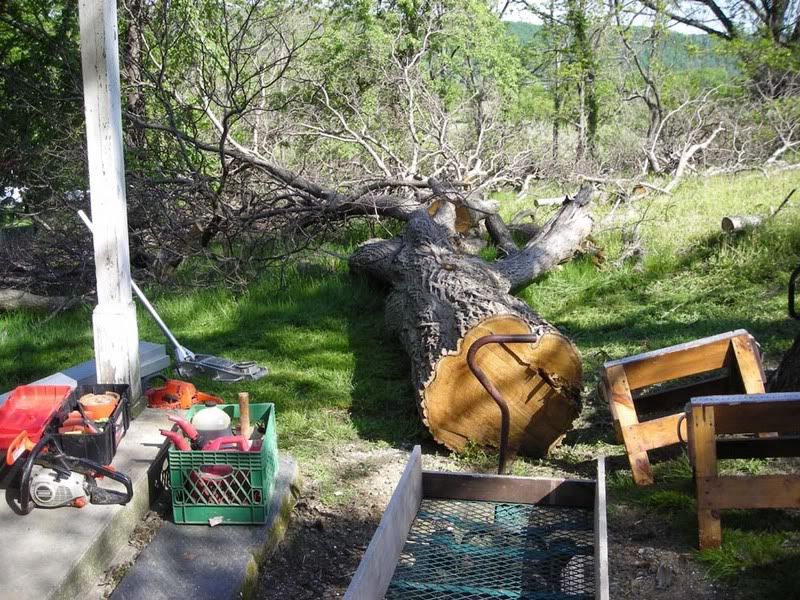
here is the tree as dropped
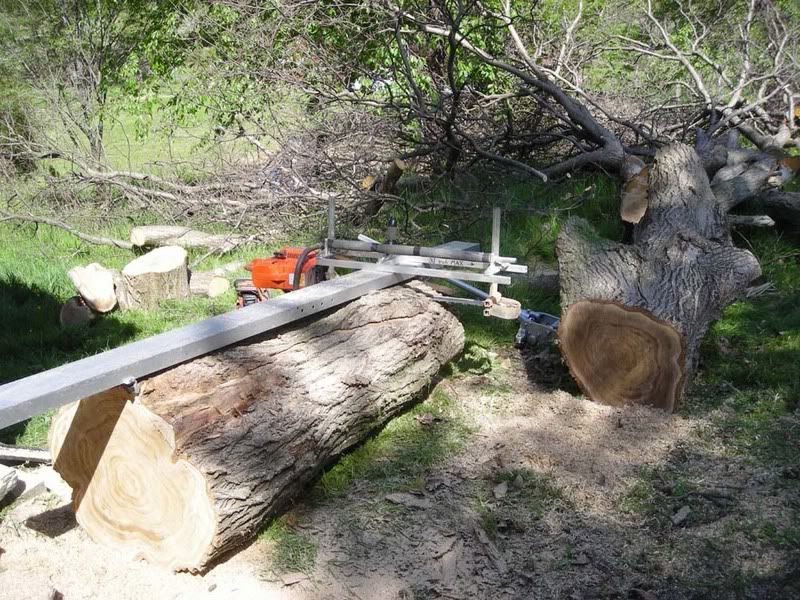
Started slabbing with the csm. Took a slightly different take this time and didn't make as square a cant as usually do. Basically slabed off 8 inch thick cants and then squared those individually.
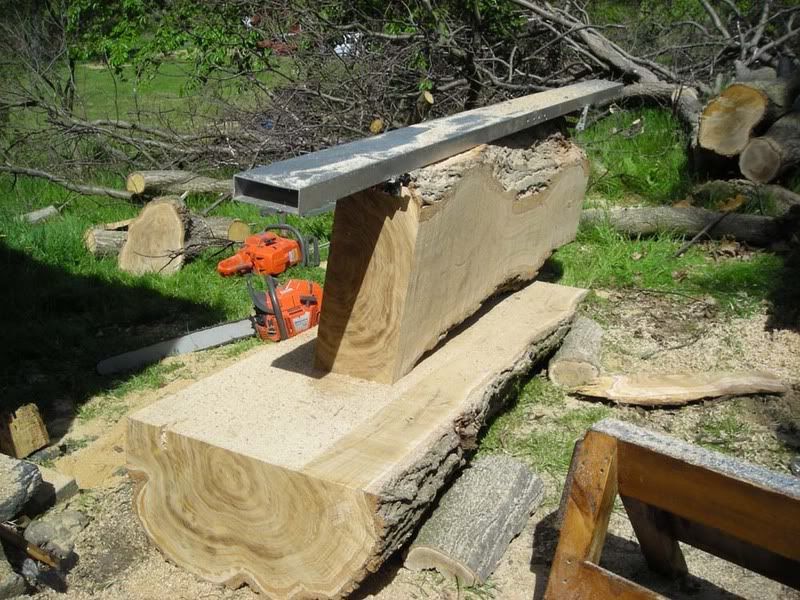
As you can see, I stood the 8 inch slabs upright and started slicing.
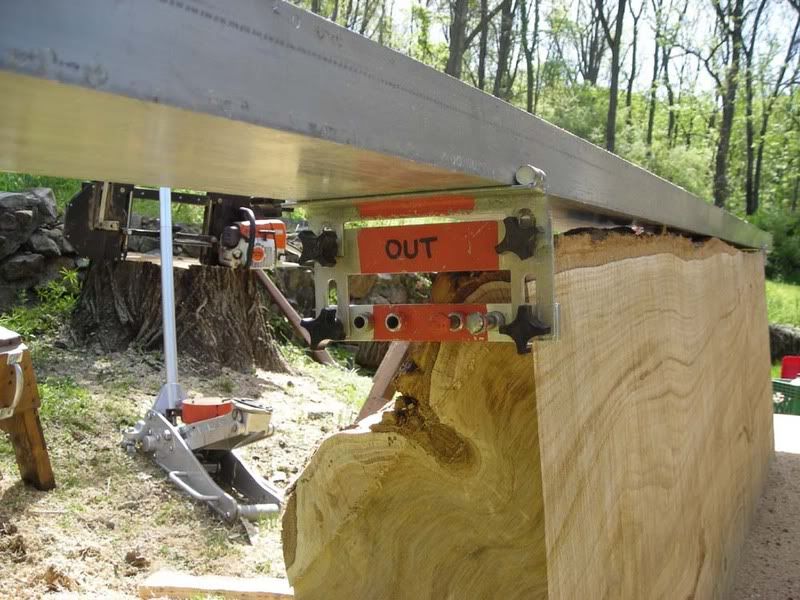
The aluminum 2x6 guides that come with the Ripsaw easily attach to odd shaped ends of a cant as you can see here. Those two pins can be moved along that jig to where the meat is.
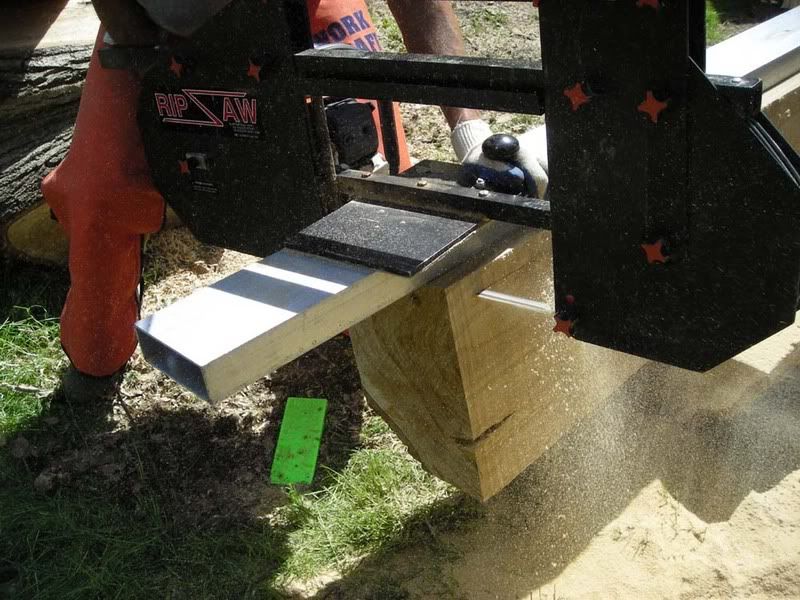
Just finishing up a 6/4 board. With this wood cutting so easily, and the cant only 8 inches wide, I was able to push the saw down the cant at about an inch per second, or 10-12 seconds per ft. This stuff mills NICE.
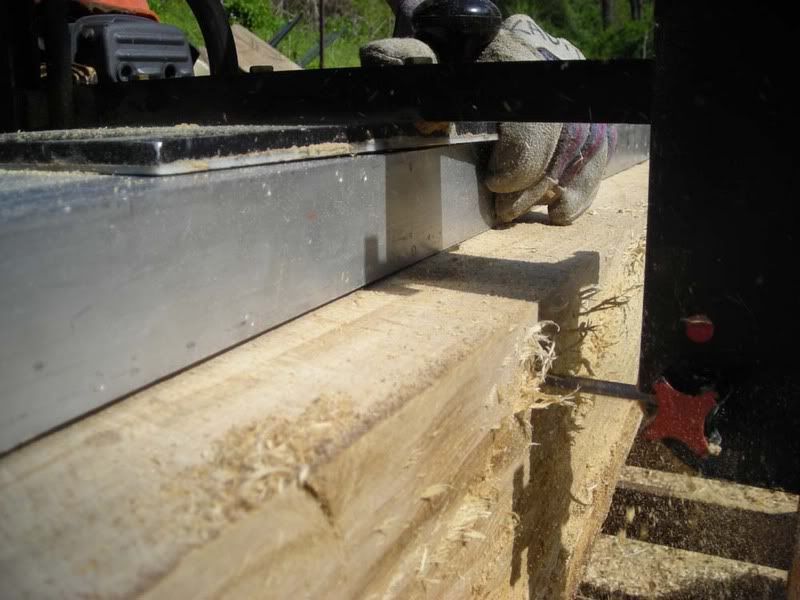
up close and personal with the business end of the mill
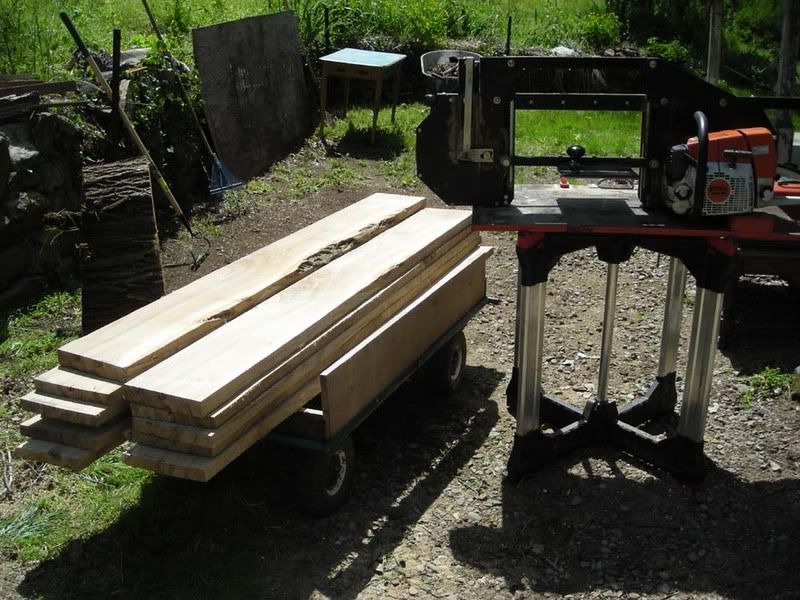
This is about half of the days take... some pretty stuff. Bottom line... if you get a chance to mill up a chestnut log... take it. This stuff was a dream to mill.
Some milling pics for those interested.

here is the tree as dropped

Started slabbing with the csm. Took a slightly different take this time and didn't make as square a cant as usually do. Basically slabed off 8 inch thick cants and then squared those individually.

As you can see, I stood the 8 inch slabs upright and started slicing.

The aluminum 2x6 guides that come with the Ripsaw easily attach to odd shaped ends of a cant as you can see here. Those two pins can be moved along that jig to where the meat is.

Just finishing up a 6/4 board. With this wood cutting so easily, and the cant only 8 inches wide, I was able to push the saw down the cant at about an inch per second, or 10-12 seconds per ft. This stuff mills NICE.

up close and personal with the business end of the mill

This is about half of the days take... some pretty stuff. Bottom line... if you get a chance to mill up a chestnut log... take it. This stuff was a dream to mill.





